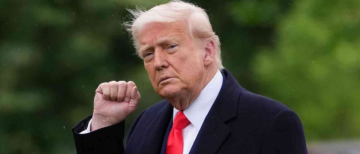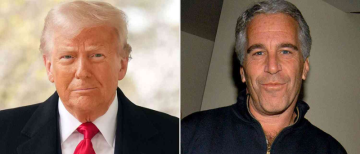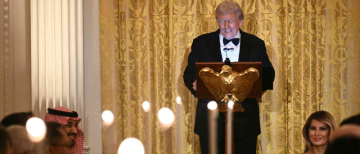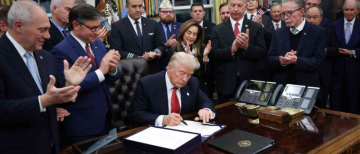"Trade wars are good, and easy to win." — Donald Trump (2018)
The global economy has been significantly affected by tariff wars, with trade tensions escalating between major economies like India and the United States. As both nations impose tariffs on each other’s goods, financial markets have responded with volatility, reflecting investor concerns about economic growth and stability.
In case you are wondering, What Are Tariff Wars?
A tariff war, or trade war, occurs when countries impose retaliatory tariffs on imports from one another. Governments use tariffs as a tool to protect domestic industries, correct trade imbalances, or penalize unfair trade practices. However, such actions can trigger economic disruptions, increase production costs, and weaken global trade cooperation.
The effects of a tariff war include:
-
Increased prices for consumers due to higher import costs
-
Disruptions in supply chains affecting industries dependent on foreign raw materials
-
Reduced exports due to retaliatory measures from affected countries
-
Increased market uncertainty and investor volatility
Throughout history, various countries have engaged in tariff disputes to protect domestic industries or retaliate against perceived trade imbalances. Some of the most notable ongoing tariff conflicts include:
1. United States vs. China
The U.S.-China trade war began in 2018 when President Donald Trump imposed tariffs on billions of dollars’ worth of Chinese goods at the time. China retaliated with its own set of tariffs, leading to a prolonged economic standoff that affected industries worldwide, particularly technology, agriculture, and manufacturing. The escalating trade tensions between the United States and China have led to significant volatility in global financial markets. The Dow Jones Industrial Average experienced notable fluctuations, reflecting investor concerns over the potential economic impact of the ongoing tariff disputes.
The Dow Jones Industrial Average though up in the last 6 months, faced substantial intraday swings, at times dropping hugely, as investors reacted to the intensifying trade war between the U.S. and China.The trade tensions have not only affected U.S. markets but have also led to declines in global stock markets, with European and Asian indices experiencing similar trends. Industries heavily reliant on international trade, such as technology and manufacturing, have been particularly hard-hit, with major companies in these sectors seeing significant stock price corrections.
In response to the trade war, there have been notable movements in currency markets, with concerns over potential devaluation strategies impacting investor confidence. The ongoing uncertainty surrounding trade negotiations has led to increased market volatility, as investors grapple with the potential long-term economic consequences of the tariff escalations.
2. United States vs. European Union
The U.S. and the EU have engaged in tariff disputes over various issues, including subsidies for aircraft manufacturers (Boeing vs. Airbus), tariffs on steel and aluminum, and digital services taxes imposed by EU countries.
Banks and hedge funds have expanded their foreign exchange operations due to heightened market volatility stemming from Trump's tariff announcements. This surge in activity has led to increased profits in currency trading. The S&P 500 index experienced a near 2% decline but recovered most losses after President Trump postponed the implementation of 25% tariffs against Mexico by one month. This decision temporarily alleviated investor concerns, demonstrating the market's sensitivity to trade policy developments.
Analysts predict that ongoing tariff-related rhetoric and policies may negatively affect U.S. Treasury markets. Despite a rally in U.S. stocks, with the S&P 500 up nearly 4% year-to-date, concerns persist that prolonged trade tensions could lead to increased volatility in bond markets. While stocks have rebounded after initial declines due to tariff threats, investors remain cautious. The market's recovery suggests a belief that tariffs may serve as negotiation tools; however, uncertainty about future trade policies continues to keep investors on edge. President Trump's ongoing trade war, marked by plans for additional tariffs, indicates a persistent and aggressive approach to U.S. trade policy. This strategy has raised concerns about potential disruptions in global trade and the broader economic implications of sustained tariff escalations.
3. United States vs. Canada and Mexico
Under Trump’s presidency, the U.S. imposed tariffs on steel and aluminum imports from Canada and Mexico, prompting retaliatory measures. The dispute was later settled under the USMCA (United States-Mexico-Canada Agreement), replacing NAFTA.
Major European stock indices, including the UK's FTSE 100, Germany's DAX, and France's CAC, have all suffered substantial volatility. The downturn was precipitated by the United States' announcement of new tariffs: 25% on imports from Mexico and Canada, and 10% on imports from China. The abrupt implementation of these tariffs and the swift retaliatory actions from affected countries have unsettled investors. This environment of uncertainty has led to a shift away from riskier assets, contributing to the market slump.
In response to the trade tensions, the U.S. dollar has strengthened against other major currencies, including the Euro, Canadian dollar, and Mexican peso. This currency movement reflects the global financial community's reaction to the evolving trade policies. Analysts warn that prolonged trade conflicts could lead to recessions in countries like Canada and Mexico, higher inflation in the U.S., and broader disruptions to the global economy. The potential for further tariffs, particularly targeting the European Union, adds to the prevailing market volatility.
4. United States vs. India
Remember the tariff war during the Great Depression due to the Smoot-Hawley Tariff Act of 1930?
The act raised U.S. tariffs on over 20,000 imported goods, leading to widespread retaliation from other countries. Global trade collapsed as countries imposed counter-tariffs and American exports dropped by more than 50%, worsening unemployment. The world economy entered a deeper recession, prolonging the Great Depression.
India and the U.S. have been in a tariff war, with the U.S. criticizing India’s high import duties on American goods. India imposed retaliatory tariffs on American agricultural products and other imports after the U.S. withdrew India’s preferential trade status under the Generalized System of Preferences (GSP).
Despite periods of growth, global markets have experienced significant volatility. Frequent policy shifts and unpredictable tariff implementations created uncertainty for businesses and investors, leading to market selloffs. Tariff impositions led to countermeasures from China, the EU, and other nations, reducing demand for U.S. exports and hurting global supply chains.
Indian markets are the worst sufferers:
The escalating trade tensions between India and the United States have significantly impacted the Indian stock markets. The Indian benchmark indices, Nifty 50 and Sensex, have experienced notable downturns, each dropping approximately 5-6% in last few months. The small-cap segment has been particularly affected, with the small-cap index tumbling over 20% in the last 6 months, officially entering bear market territory.
Mid-cap stocks have also faced significant pressure, with the mid-cap index declining by 14%, nearing bear market conditions. Foreign investors have pulled out approximately 1 lakh crore from Indian equities in 2025 alone, contributing to market volatility and a depreciation of the Indian rupee to record lows.
Analyses indicate that India's average tariff rate on U.S. imports is more than 10 percentage points higher than the tariffs the U.S. imposes on Indian goods, making India particularly vulnerable to reciprocal tariff measures. The combination of trade tensions, foreign investment outflows, and currency depreciation has led to increased caution among investors, contributing to heightened market volatility.
Ongoing negotiations including the visit from PM Modi to the Trump Bastion, and potential policy shifts between India and the U.S. have introduced an element of uncertainty, prompting investors to closely monitor developments that could influence market dynamics.
_1739616999.jpg)
The India-U.S. tariff war is part of a broader global trend of increasing trade protectionism. While tariffs are often used to protect domestic industries, history has shown that they can lead to economic stagnation, market instability, and higher consumer prices. For India and the U.S., reaching a fair trade agreement is crucial for sustaining economic growth and global stability. As markets react to new policies, businesses and investors remain on high alert, navigating uncertainties in an ever-evolving trade environment.
© Copyright 2024. All Rights Reserved Powered by Vygr Media.



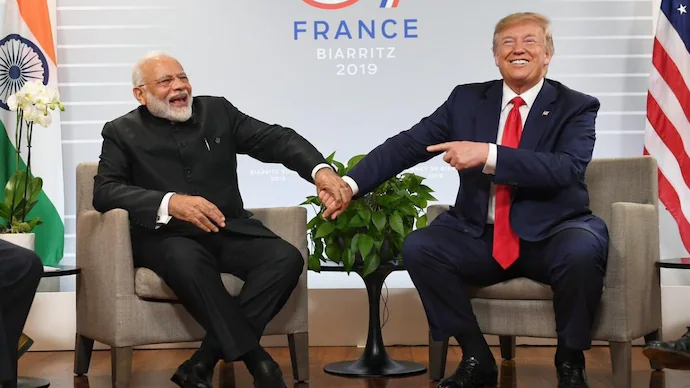
_1739616130.jpeg)






